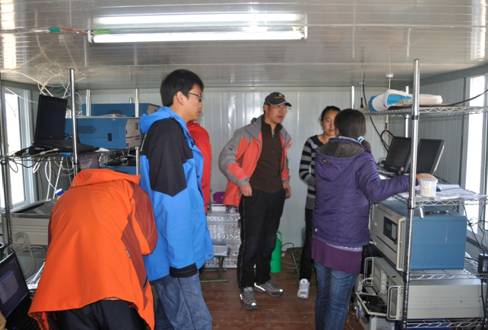| News |
| Latest news | |
| Int’l Cooperation activities | |
| Events & Announcement | |
| Recent Activities |
| Location: Home>News>Recent Activities |
| Observation of influences of atmospheric component on radiation intensified at NAMORS |
To study the influence of atmospheric ozone and aerosol variations on atmospheric radiation budget over the Tibetan Plateau, the NAMORS joined hands with brother institutions (e.g., Chinese Academy of Meteorological Sciences, Chinese Research Acadmey of Environmental Sciences, Shanghai Meterological Bureau, and China University of Mining and Technology) in launching a holistic and intensified observation program. It involves not only in situ monitoring by scientific staff, but also online monitoring equipment for all-time observations.
Previous efforts in NAMORS since 2005, including sustained observation of black carbon, aerosol optical depth (AOD), and atmospheric mercury have achieved preliminary understanding of the atmospheric environment in the Nam Co region. They confirmed clean atmospheric environment in the region, with its AOD ranking the lowest in China. Dust aerosol was also identified as the major aerosol components.
With this intensified program, scientists plan to conduct a three-month observation for atmospheric components of aerosols, ozones, nitrogen oxides, sulpher dioxide, PAN and ammonia etc. The aim is to further understand the temporal distribution features of atmospheric ozone and aerosols in the Nam Co region, and to assess the influence of their variations on the radiation budget on the Tibetan plateau. |


